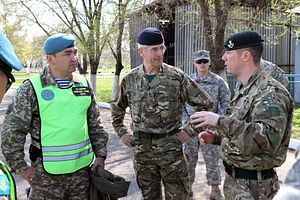Weekend Central Asia reading:
An Eminently Reasonable Report: Reports covering Central Asian Islamic State (ISIS) fighters and regional blowback risks are often overblown, relying uncritically on regional government estimates and assertions about the threat without adequately acknowledging that these states gain something by inflating their claims. A recent report published by the National Defense University, titled “The Return of Foreign Fighters to Central Asia: Implications for U.S. Counterterrorism Policy,” is one of the most sober assessments of the subject to date. The authors — Thomas F. Lynch III, Michael Bouffard, Kelsey King, and Graham Vickowski — deftly assess the situation, noting that while there is a sizable contingent of ethnic Central Asians fighting in Syria, analysts say many are recruited in Russia and have no plans or hopes to return to the region. Importantly for U.S. policymakers:
Most Central Asian states face their greatest risk of domestic instability and violent extremism as a reaction to political repression and counterterrorism (CT) policies that counterproductively conflate political opposition and the open practice of Islam with a domestic jihadist threat. If improperly calibrated, greater U.S. CT assistance to address foreign fighter returns may strengthen illiberal regime short-term focus on political power consolidation, overplay the limited risks of foreign fighter returns, and increase the risks of domestic unrest and future instability.
Regional watchers may quibble about some aspects of the recommendations — security assistance targeted at border security intelligence and capacity building — but for many the report is a breath of fresh air on a subject so often steeped in state-led fear-mongering.
A Family Feud Over TALCO? John Heathershaw picked through the surprising news appearing in Tajik media about trouble at TALCO, the state’s aluminum plant. The Ministry of Finance said last week that TALCO had lost $1.1 billion over the past 6 years in what has been described as a “prehistoric method of money laundering.” TALCO pushed back, denying the ministry’s claims. “The dispute is very public, unlike most matters with respect to Talco,” Heathershaw says, going on to note that this may be a set-up for management changes at TALCO. But there could be something else going on, seeing as the news shines a light on a corrupt business from which the Rahmon regime has directly benefited. Heathershaw’s dive into previous disputes and backroom politicking surrounding TALCO gives some much-needed context.
Kazakh Movies for Kazakhs: The Kazakh Parliament is apparently considering a bill that would require film distributors and theaters to dub and/or provide subtitles in Kazakh for all foreign-language movies. The bill’s sponsors, EurasiaNet writes, say that the requirement would “enhance public engagement among the Kazakh-speaking section of the population. Another aim is to broaden the use and understanding of Kazakh.” A 2009 census supports the notion that most Kazakhs speak Russian and fewer speak Kazakh — but there remain Kazakhs who only speak Kazakh. Kazakh is the “state language” and Astana has been quite determined in recent years to proudly and clearly embrace Kazakhness. The drive to provide quality dubbing in Kazakh is more than high-level politics, but the reality is it’s also a costly, complex endeavor.

































